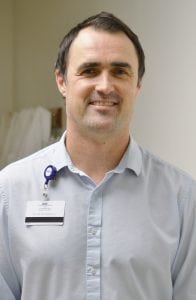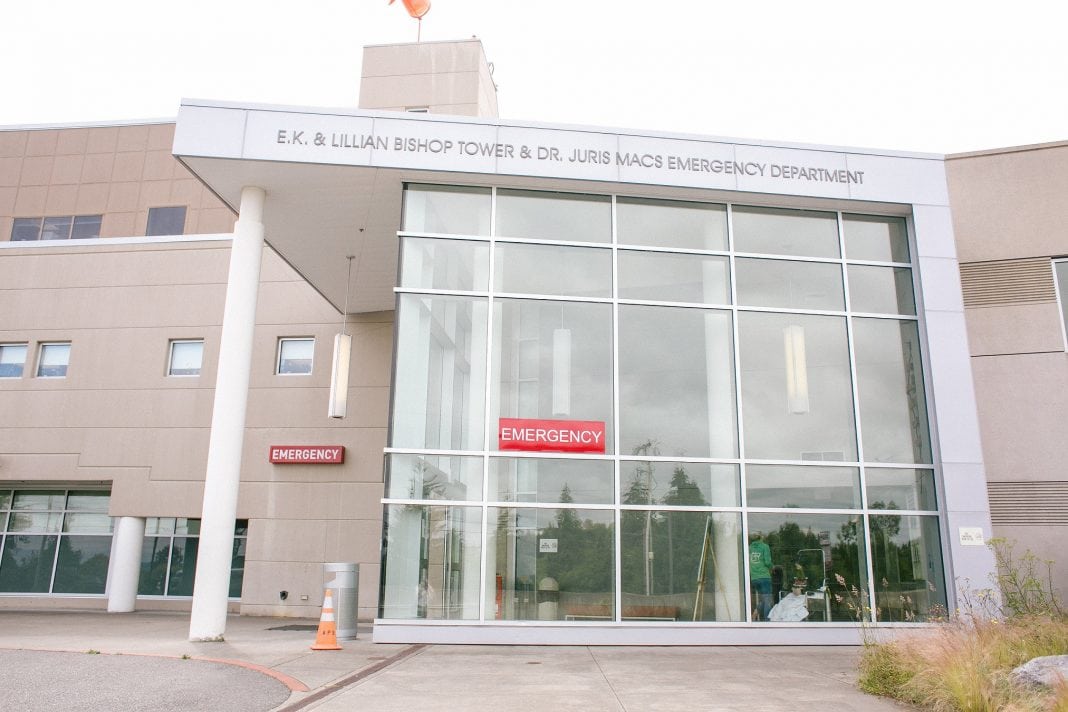If you have spent time as an inpatient at Grays Harbor Community Hospital (GHCH) recently, chances are that you have met one of the hospitalists on staff. These providers represent a growing trend in healthcare designed to provide more coordinated care for admitted patients.

“Hospitalist is a relatively new term,” explains Dr. Samuel Donohoe, one of the hospitalists on staff at GHCH. “It classically refers to physicians trained in internal medicine who devote their practice to only being in in the hospitals.”
Like Donohoe, most hospitalists complete a three-year residency that generally encompasses all the specialties that fall under internal medicine. This includes non-surgical specialties such as cardiology, pulmonary medicine, intensive care, endocrinology and more.
“We are essentially the primary care physician for the patient while they are admitted,” says Donohoe. As such, he and his colleagues not only provide extensive medical treatment, but they also maintain a continuity of care during the patient stay, coordinating with other specialists involved. At discharge, the hospitalist ensures a smooth transition back to the patient’s primary clinical provider.
The hospitalist trend in healthcare began gaining momentum in the early 2000s. The need for more inpatient care grew simultaneously with the need for more outpatient clinic care. Physicians found it increasingly challenging to watch over a full panel of patients in the hospital and also maintain a full clinic.
“When I was young, my general practitioner made house calls,” remembers Donohoe. “Today, primary care providers have been tasked with seeing more and more patients in less time. They no longer have the time to follow their patients in the hospital to the degree they once had.”

As is the case with hospitals across the country, GHCH turned to the hospitalist model to increase efficiency and to provide more specialized and centralized care for patients. Because hospitalists work full-time with inpatients, they have extensive expertise caring for medically complicated scenarios.
In addition, the unique schedule of a hospitalist ensures a greater availability to both patients and their families. Typically, a hospitalist works seven days at a time.
“During my week on, I essentially work 24/7,” explains Donohoe. “I work 12-hour shifts, but I am also the primary doctor on call. I take care of all the ICU patients and multiple patients on the regular ward. I also oversee the physician assistants who provide care for the less complicated patients.”
At the end of his week on, Donohoe transfers his panel of patients on to the next hospitalist. The model works well, with a goal of providing better quality of care and increased patient satisfaction. Patients can rest assured that there is a team ready and waiting to care for them 24/7/365.
That team includes a host of nurses, therapists, technicians and medical social workers, all making sure that patients get the best care possible and that families have the resources they need. “I couldn’t do what I’m doing without the social workers, without the ward clerks who make sure the follow-ups are happening, without the financial people and everyone in between,” says Donohoe. “For example, I communicate with the medical social workers nonstop every day. They are fantastic here.”
Because the hospitalists work exclusively in the hospital, they are familiar with hospital activities and policies. They are also available most of the day to meet with families and other medical professionals involved. At the same time, with reduced need to make rounds at the hospital, clinic physicians now have more time to focus on their patients in the outpatient setting.

Once patients complete their hospital stay, the hospitalists coordinate a transition of care back to the primary care physician. Typically, the hospitalists talk with the patient’s physician at admission and as needed during the stay. At discharge, they ensure that the patient has a follow-up visit scheduled and that the physician receives a full discharge summary right away.
Part of what attracted Donohoe to Grays Harbor was the acute need for providers to care for a large geographical area. While illness exists everywhere, he saw that in the Harbor there were fewer providers available to fill a growing need.
“You can only imagine if this hospital weren’t here,” he says. “I take care of patients from the south end of Clallam County down through Pacific County, from Copalis Beach across to Oakville, all the way down to Raymond and South Bend. We also care for travelers from other states.”
Hopefully, the next time you meet Donohoe, it will be in line at Starbucks, and you can chat about surfing or the Seahawks. But if illness does send you to the hospital, know that he and the other hospitalists will be there for you, providing excellent, compassionate care when you need it most.
Sponsored












































